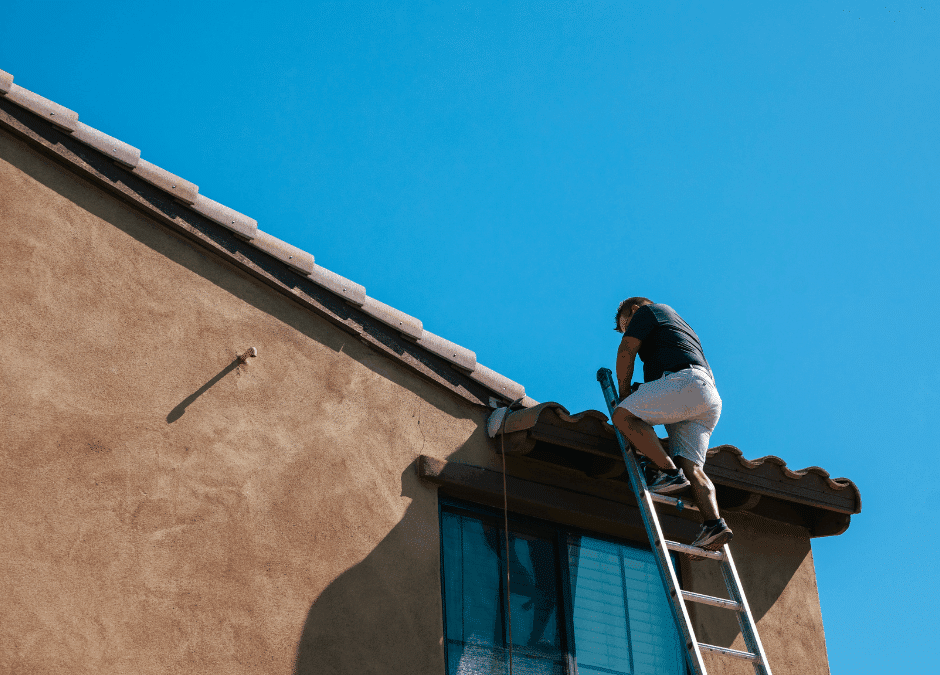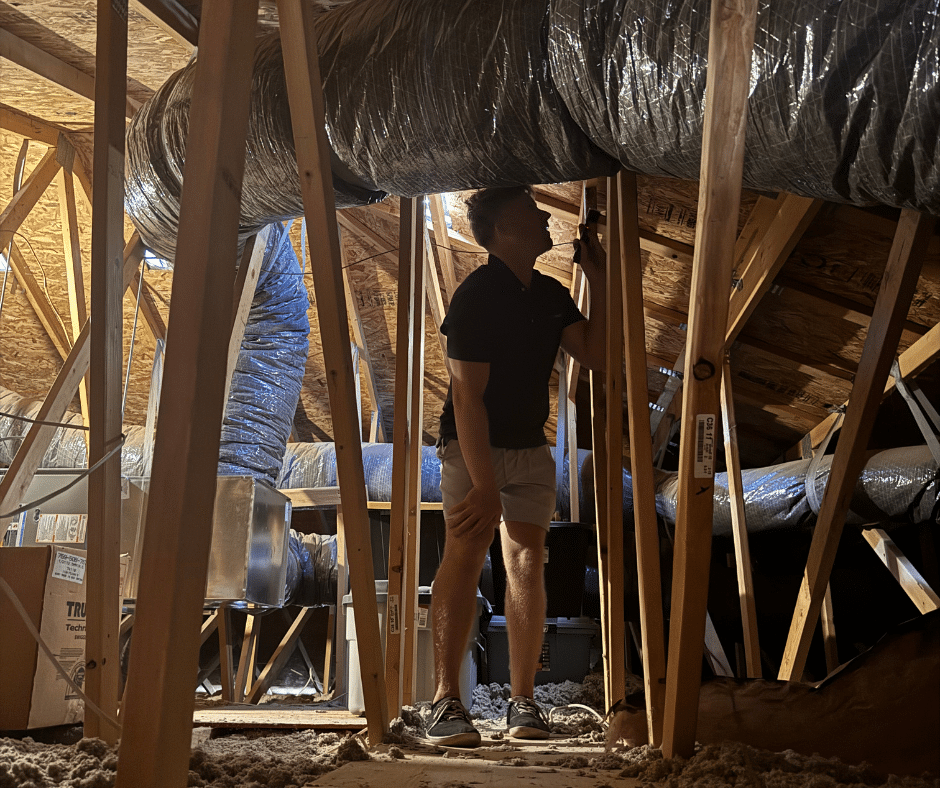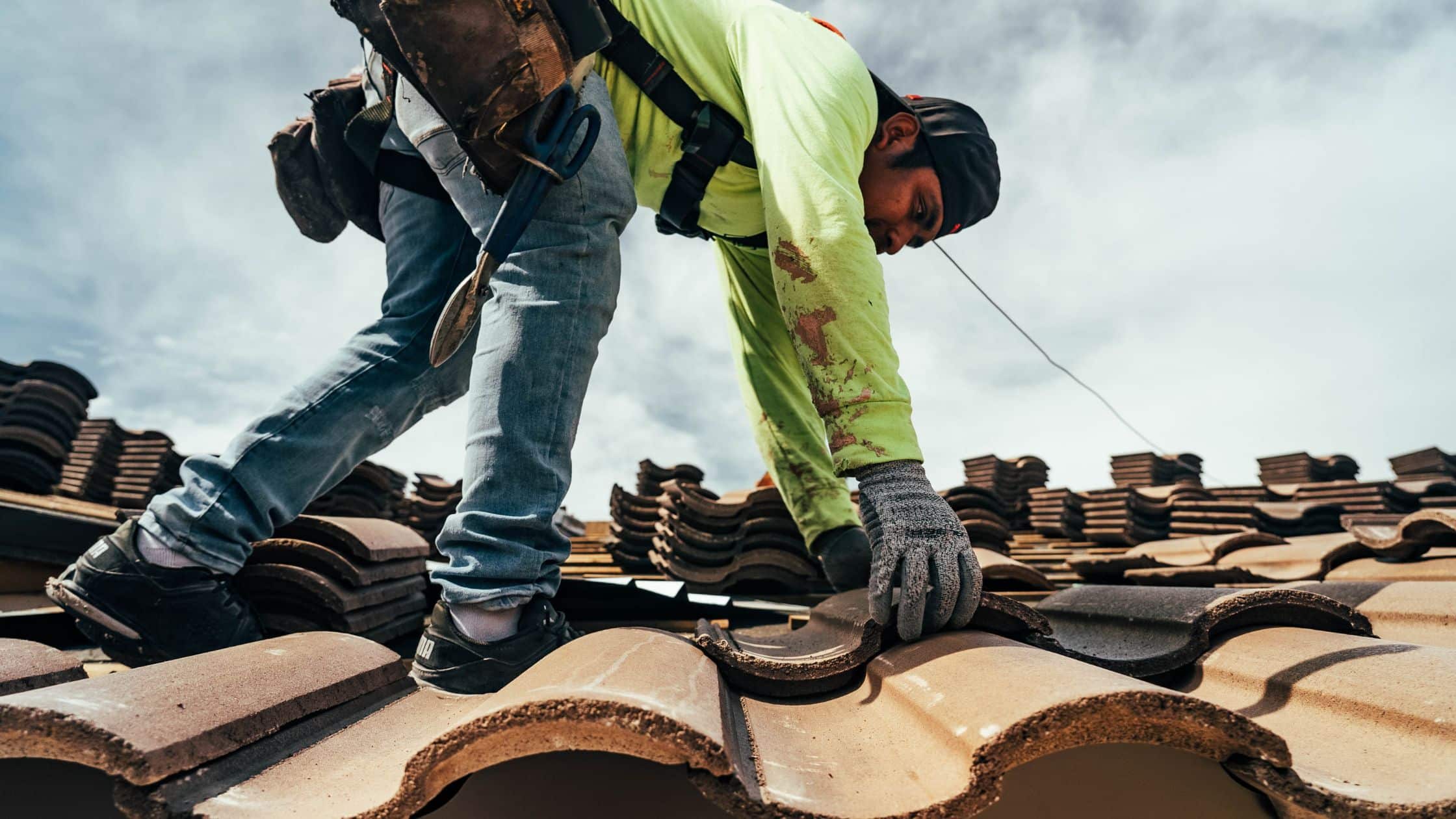Your roof is one of the hardest-working parts of your home, especially in Phoenix. Between the summer sun, monsoon storms, and year-round UV exposure, it takes a beating. Regular maintenance can add years to your roof’s life and save you thousands in roof repairs, but many homeowners put it off until something goes wrong.
But there’s good news. A lot of basic roof maintenance tasks are doable on your own if you’re comfortable working at heights and know what to look for. That said, it does take time, effort, and the right safety equipment.
In this article, we’ll walk you through a 20-point checklist for inspecting and maintaining your Phoenix roof. Whether you tackle these tasks yourself or decide to bring in the pros, you’ll know exactly what your roof needs to stay in top shape.
20-Point Roof Inspection & Maintenance Checklist
Keeping your roof in great shape doesn’t have to be complicated. Use this checklist to guide your next DIY inspection. Remember, catching issues early can prevent costly repairs down the line.
Before you begin, remember that safety always comes first. Never climb onto your roof without the right footwear, a stable ladder, and a spotter nearby. If the slope feels steep or the conditions are slippery, it’s best to stay on the ground and call a professional.
1. Inspect shingles or tiles for cracks, curling, or missing pieces
Look for any cracked, curled, or missing materials, especially after a storm. Damaged shingles or tiles leave the underlayment exposed to moisture and UV rays, which can accelerate roof deterioration.
2. Check for loose or damaged flashing around vents, chimneys, and skylights
Flashing seals the joints where different roof sections meet. Even small gaps or lifted edges can let water in, requiring more extensive roof repair, so make sure the metal is snug and corrosion-free.
3. Look for signs of roof sagging or soft spots
A sagging area can signal structural damage or trapped moisture. If the roofline dips or feels spongy underfoot, call a professional right away.
4. Examine gutters and downspouts for clogs or debris buildup
Leaves, dirt, and granules can block water flow, causing overflow that damages fascia or siding. Clear them out so water drains freely.
5. Clear leaves, dirt, and branches from roof valleys
Roof valleys collect runoff from multiple slopes. Keep them free of debris to prevent pooling water that can lead to leaks.
6. Inspect for water stains or leaks in the attic or ceiling
Check ceilings and attic rafters for dark spots or musty smells — classic signs of slow leaks that need attention before they spread.
7. Check for worn or deteriorated sealant around penetrations
Any place where pipes, vents, or antennas penetrate the roof should have a watertight seal. Reapply roof-grade caulk or sealant as needed.
8. Look for sun or UV damage on roof surfaces
Phoenix roofs take a beating from the sun. Faded patches, brittle materials, or surface cracking indicate UV wear that can shorten your roof’s lifespan.
9. Ensure roof vents are clear and functioning properly
Proper ventilation prevents heat and moisture buildup in the attic. Confirm that vents aren’t blocked by insulation, debris, or bird nests.
10. Inspect fascia boards and soffits for rot or peeling paint
These components protect the roof’s edges and help ventilate the attic. Peeling paint or soft wood signals moisture damage that should be repaired promptly.
11. Look for signs of pest activity or nesting under eaves
Birds, rodents, and insects can cause damage if they find a home near your roof. Remove nests and seal any small gaps they may use to get inside.
12. Check foam or flat roof coatings for cracks or blistering
If you have a flat or foam roof, inspect the coating for cracks, blisters, or soft spots. Recoating as needed keeps the surface watertight and energy-efficient.
13. Inspect roof edges and drip lines for rust or gaps
Metal drip edges protect your fascia and guide water into gutters. Look for rust, loose sections, or gaps that could let water seep underneath.
14. Verify that gutters are securely fastened and angled correctly
Gutters should slope slightly toward the downspouts. Loose fasteners or sagging sections can lead to overflow and water pooling near your foundation.
15. Examine flashing and joints for corrosion or lifting
Metal flashing near chimneys, skylights, and vents can corrode or pull away with age. Re-secure or replace to prevent leaks before monsoon season hits.
16. Trim overhanging tree branches to prevent debris and abrasion Branches rubbing against your roof can scrape granules off shingles and cause impact damage during high winds. Keep them trimmed back at least six feet.
17. Look for granules in gutters indicating shingle wear
A handful of granules is normal, but excess buildup means your shingles are aging and losing their protective surface. Consider an inspection if it continues.
18. Check the condition of skylight seals and frames
Sun exposure and temperature swings can crack seals around skylights. Reseal or replace the flashing if you notice any leaks or fogging between panes.
19. Verify attic ventilation to prevent trapped heat
Inadequate ventilation leads to trapped heat and moisture, which can warp roof decking and reduce energy efficiency. Make sure soffit and ridge vents are clear.
20. After monsoon season, inspect for storm or wind damage
Once the storms pass, do a full walk-around to check for missing shingles, cracked tiles, or lifted flashing. Quick repairs after monsoon season protect your roof through the winter.
Need Professional Roof Maintenance Services in Phoenix?
Even the most dedicated DIYers reach a point where it makes sense to call in the pros. A full roof inspection from a licensed contractor can uncover hidden issues such as sub-surface leaks, worn underlayment, or early signs of structural wear that are not visible from the surface.
At RENCO Roofing, our team combines decades of local experience with honest, straightforward service. We understand the unique challenges Phoenix roofs face, from relentless sun exposure to sudden monsoon downpours, and we know how to spot small problems before they turn into major repairs.
Professional maintenance is often more affordable than most homeowners realize. Our technicians can clean, reseal, and repair problem areas for a fraction of the cost of replacement. That keeps your roof in excellent condition and protects your home year-round.
Ready to take the stress out of roof maintenance?
Schedule your professional inspection with RENCO Roofing today and enjoy the peace of mind that comes from knowing your roof is ready for anything the Phoenix weather brings.





